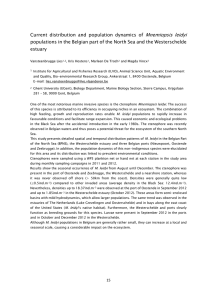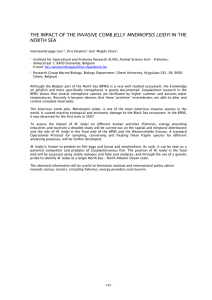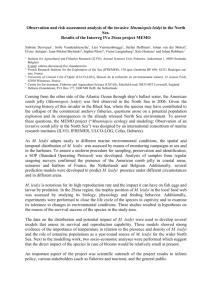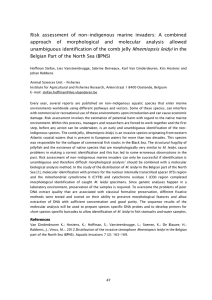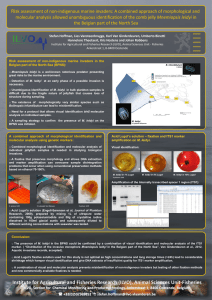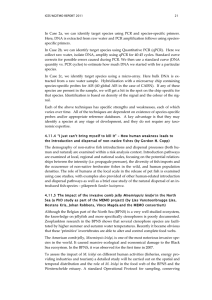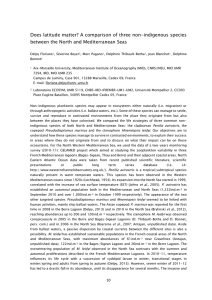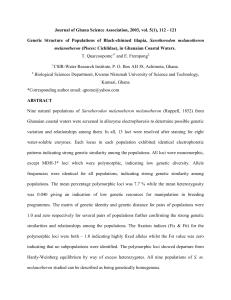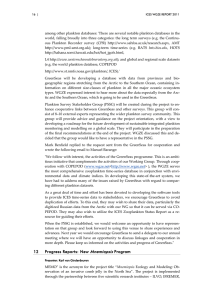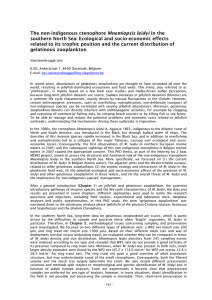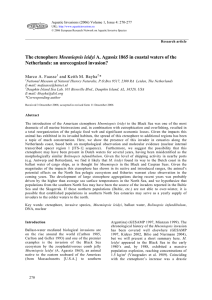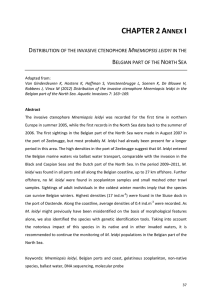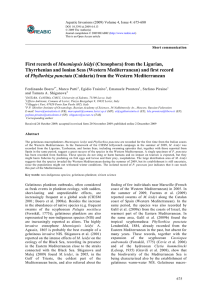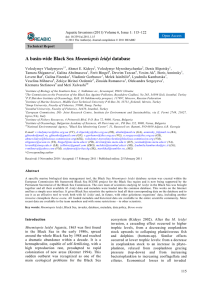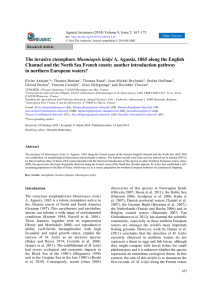Exploring population structure of Mnemiopsis leidyi in north- western European waters
advertisement
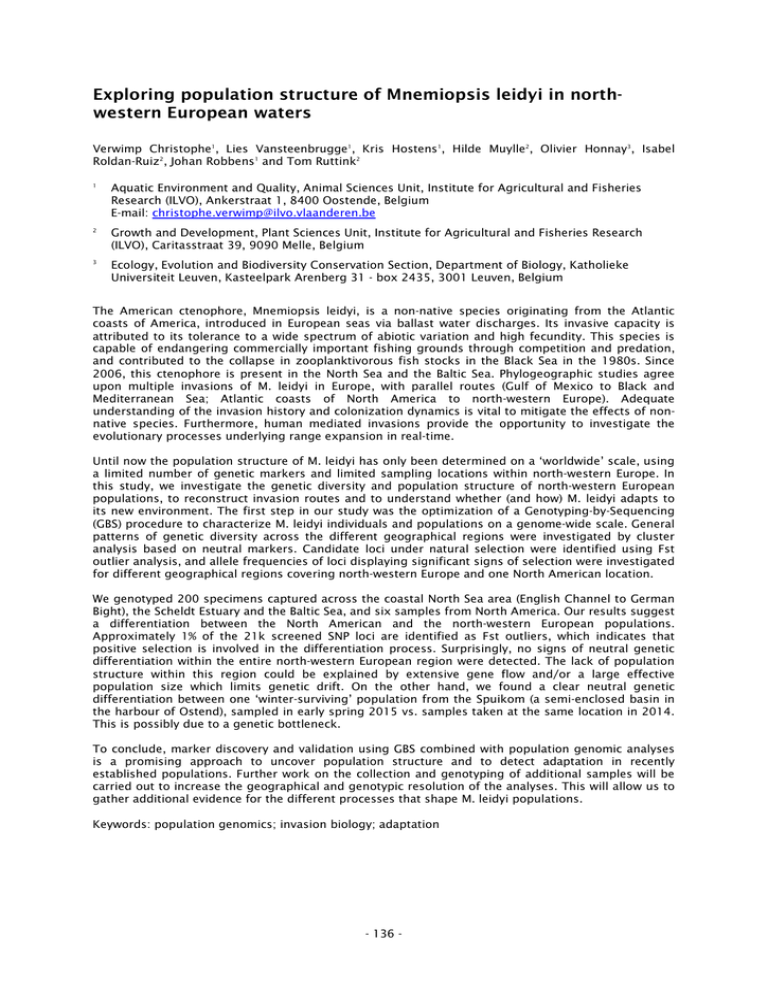
Exploring population structure of Mnemiopsis leidyi in northwestern European waters Verwimp Christophe1, Lies Vansteenbrugge1, Kris Hostens1, Hilde Muylle2, Olivier Honnay3, Isabel Roldan-Ruiz2, Johan Robbens1 and Tom Ruttink2 1 Aquatic Environment and Quality, Animal Sciences Unit, Institute for Agricultural and Fisheries Research (ILVO), Ankerstraat 1, 8400 Oostende, Belgium E-mail: christophe.verwimp@ilvo.vlaanderen.be 2 Growth and Development, Plant Sciences Unit, Institute for Agricultural and Fisheries Research (ILVO), Caritasstraat 39, 9090 Melle, Belgium 3 Ecology, Evolution and Biodiversity Conservation Section, Department of Biology, Katholieke Universiteit Leuven, Kasteelpark Arenberg 31 - box 2435, 3001 Leuven, Belgium The American ctenophore, Mnemiopsis leidyi, is a non-native species originating from the Atlantic coasts of America, introduced in European seas via ballast water discharges. Its invasive capacity is attributed to its tolerance to a wide spectrum of abiotic variation and high fecundity. This species is capable of endangering commercially important fishing grounds through competition and predation, and contributed to the collapse in zooplanktivorous fish stocks in the Black Sea in the 1980s. Since 2006, this ctenophore is present in the North Sea and the Baltic Sea. Phylogeographic studies agree upon multiple invasions of M. leidyi in Europe, with parallel routes (Gulf of Mexico to Black and Mediterranean Sea; Atlantic coasts of North America to north-western Europe). Adequate understanding of the invasion history and colonization dynamics is vital to mitigate the effects of nonnative species. Furthermore, human mediated invasions provide the opportunity to investigate the evolutionary processes underlying range expansion in real-time. Until now the population structure of M. leidyi has only been determined on a ‘worldwide’ scale, using a limited number of genetic markers and limited sampling locations within north-western Europe. In this study, we investigate the genetic diversity and population structure of north-western European populations, to reconstruct invasion routes and to understand whether (and how) M. leidyi adapts to its new environment. The first step in our study was the optimization of a Genotyping-by-Sequencing (GBS) procedure to characterize M. leidyi individuals and populations on a genome-wide scale. General patterns of genetic diversity across the different geographical regions were investigated by cluster analysis based on neutral markers. Candidate loci under natural selection were identified using Fst outlier analysis, and allele frequencies of loci displaying significant signs of selection were investigated for different geographical regions covering north-western Europe and one North American location. We genotyped 200 specimens captured across the coastal North Sea area (English Channel to German Bight), the Scheldt Estuary and the Baltic Sea, and six samples from North America. Our results suggest a differentiation between the North American and the north-western European populations. Approximately 1% of the 21k screened SNP loci are identified as Fst outliers, which indicates that positive selection is involved in the differentiation process. Surprisingly, no signs of neutral genetic differentiation within the entire north-western European region were detected. The lack of population structure within this region could be explained by extensive gene flow and/or a large effective population size which limits genetic drift. On the other hand, we found a clear neutral genetic differentiation between one ‘winter-surviving’ population from the Spuikom (a semi-enclosed basin in the harbour of Ostend), sampled in early spring 2015 vs. samples taken at the same location in 2014. This is possibly due to a genetic bottleneck. To conclude, marker discovery and validation using GBS combined with population genomic analyses is a promising approach to uncover population structure and to detect adaptation in recently established populations. Further work on the collection and genotyping of additional samples will be carried out to increase the geographical and genotypic resolution of the analyses. This will allow us to gather additional evidence for the different processes that shape M. leidyi populations. Keywords: population genomics; invasion biology; adaptation - 136 -
